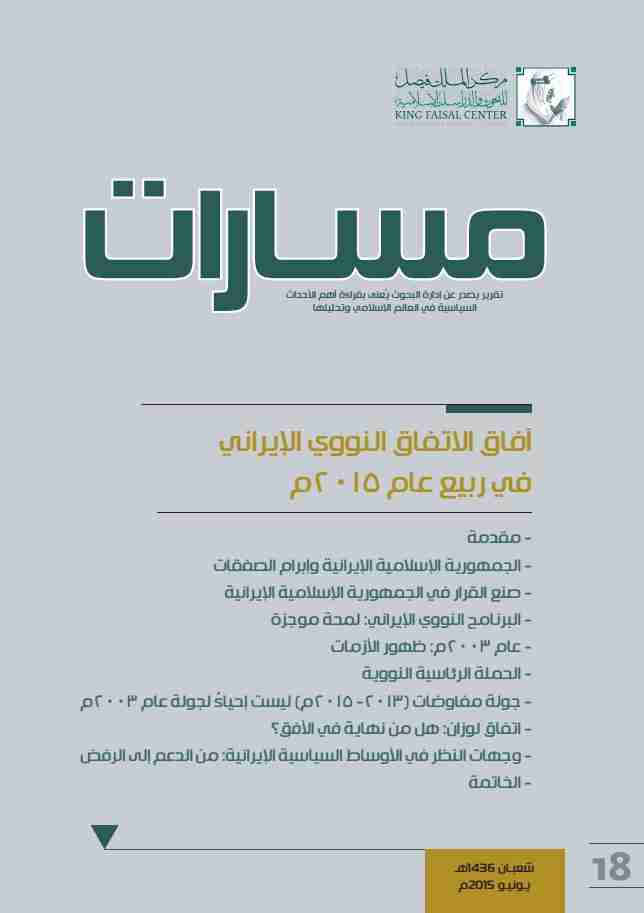The Iranian Nuclear Deal of Spring 2015: Prospects
Issue 18. Shaban 1436 – June 2015
Abstract:
On April 3, 2015, the Iranian and 5+1 delegations emerged from exhausting negotiations in Lausanne, Switzerland, to announce the preamble of the first major agreement on the Iranian nuclear program since the now-defunct Tehran Declaration issued by Brazil, Turkey, and Iran in 2010. If finalized and put into practice after June 30, the agreement potentially signals the end of the diplomatic confrontation between Iran and the West on the former’s atomic program, which has been ongoing since 2003, when an undeclared Iranian nuclear installation was uncovered by international monitors at Natanz. The Lausanne Declaration paves the way for a compromise settlement that will enable the Islamic Republic to maintain a fully-fledged but bare-bones nuclear program in operation for the near future. It will also place, according to the details presented by the US State Department, significant limitations on the extent to which Iran can develop its nuclear program toward military capabilities. Openly lauded by figures across the Iranian political spectrum, with the notable exception of the Supreme Leader Ali Khamenei, as a major breakthrough, the Lausanne Declaration and the emerging final agreement are better understood through the prism of a broader historical perspective on the Islamic Republic’s attitude at times when it was compelled to scale back its aims and activities for compelling reasons. By looking back at select elements of Iran’s major negotiations with the outside world and at the pattern of decision making in key incidents, it is possible to discern features and traits that, in turn, enable us to look ahead to what the future might have in stock for the Iranian nuclear program and its effects on Iran’s ties with the West and the surrounding region. This article will cast a glance at Iran’s past deal making from the acceptance of UN Resolution 598 in 1988, which ended the war with Iraq, to the nuclear agreements of the past decade, with a view to providing context and rationale for the decision making that led to the Lausanne Declaration.

